PHOTOS: Colorado’s Drive, Chip and Putt Champs
Three Colorado kids took on the world at the 2024 Drive, Chip and Putt Championship at Augusta National
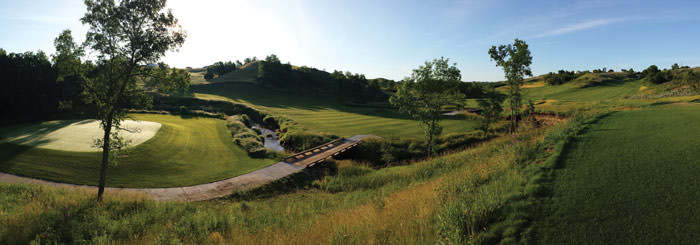
Language, like water, flows from one place to another, giving names to places and things and changing the course of history in the process.
Our state’s name derives from the “red-colored” rio colorado—named by 18th Century Spanish explorers. Another Colorado river, the Cache la Poudre, translates to hide the powder, because French trappers stashed gunpowder along the river’s snowy banks. (Today, a powder stash still refers to snow but it now suggests recreation not extermination.)
Further north and east, French trappers also named the Souris River. It curls south from Saskatchewan into North Dakota and back up to Manitoba. As anyone who took high-school French remembers, souris means mouse. Although anglophonic North Dakotans had the name legally changed to the Mouse River 55 years ago, few in the city of Minot call it that.
To them it’s the Souris, identical-sounding to tsuris—an English word appro-priated from Yiddish for trouble or distress.
Regrettably, trouble and distress are precisely what Minot residents experienced in June 2011, when the Mouse roared through town. Swollen from fast-melting snowpack and relentless rains, the Souris overflowed its banks. Similar to the 500-year deluge that would decimate parts of Colorado’s Larimer and Boulder counties two years later, North Dakota’s record-setting floods forced mass evacuations and inundated more than 4,100 homes and businesses—among them, Minot Country Club.
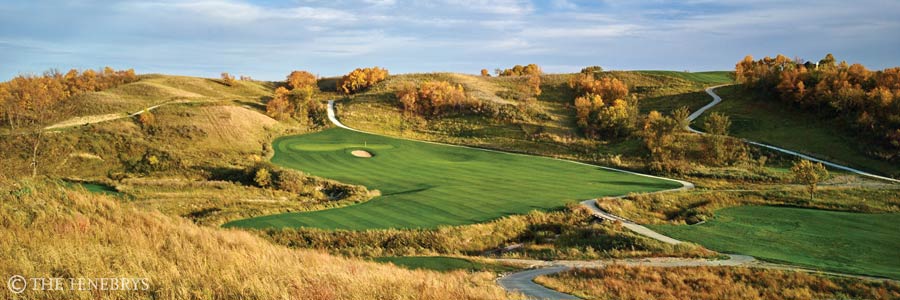
Built over rolling river bottoms in 1929 by Tom (brother of the legendary Harry) Vardon, Minot Country Club had flooded twice before. But this time, the members had had enough. They decided to move to higher ground.
Or at least they did at first. During the three months it took the waters to recede, nostalgia and economics started kicking in, dividing the membership between those who wanted to relocate to a rolling 200-acre site 10 miles east and those who wanted to rebuild the old course in the flood zone.
“It was a very emotional, financially challenging time,” remembers Minot Country Club board member Robert Dick. “About a third of the city had lost their homes, and a lot of the older members didn’t also want to lose their club.”
Ultimately, both sides got their way. In 2013, the diehards reopened the original course as a semi-private facility with a FEMA-mandated dike protection program and rechristened it Vardon Golf Club. They bought out the separatists who kept the Minot Country Club name and had already hired North Dakota native Jim Engh to design it.
For the last 25 years, Engh has made his home and reputation in Colorado with such courses as Sanctuary, Fossil Trace and Pradera. But he still roots hard for the University of North Dakota Fighting Sioux and takes pride in the values he learned growing up in Dickinson, some 180 miles southwest of Minot.
Seventy miles closer to Minot than Dickinson, Bismarck Municipal Airport is where Engh and I rendezvous. The wind howls as we stop for a peek at the nationally ranked Hawktree Golf Club, a sprawling stunner Engh carved into a valley just north of the capital city that hints at what awaits in Minot. Hawktree’s clubhouse also hosts the North Dakota Golf Hall of Fame, a wall on which hang photos of Engh and his dad Wally (and one of Minot’s Rudy Zupetz, Sanctuary’s first and only head PGA professional). True to his humble North Dakota roots, the architect deflects any discussion of his honor.
“I’ll let the guys at the club tell the story,” he says when the car conversation returns to Minot Country Club. “It’s pretty incredible what they did. It makes me proud to be from here.”

The remarkable narrative begins to unfold as our journey through the high plains ends at a modernist clubhouse seemingly perched on the edge of a cliff. Beyond it, in a valley carved by alluvial glaciers and crisscrossed by the tsuris-free Larson and Puppy Dog Coulees, spread the broad, lush, heaving slopes of a golf course for which Engh says he did “no fewer than a half-dozen reroutings.”
“What we went through, we were going to call this thing dead a number of times,” says club president Mark Hildahl, a dentist who grew up at the original club. Part of the problem owed to the political back and forth with members loyal to the old club, various government agencies and local utilities. In addition, the club lost half its original site, Dick says, “literally at the 12th hour,” but eventually the club secured an equally dramatic parcel.
Much of the financing for what would become a $12.5 million project came from the business community, five banks, two foundations, private donors and other sources. Most implausibly, however, 200 members covered more than $1 million by continuing to pay monthly dues despite not having an actual club or course to play for nearly four years.
“It was a leap of faith,” Hildahl says. “We escrowed the money. They knew we were going to knock this out. Meanwhile, most of us would drive to Bismarck and pay to play Hawktree.” (Minot’s flood-ravaged Vardon and municipal Souris Valley courses reopened in August 2013.)
Dick, Hildale and Engh all praise Head Superintendent Christopher Strange with working miracles in getting the course ready. Strange, whose pedigree includes jobs at Colorado Golf Club and Sanctuary, served as the project manager during an extremely challenging construction and grow-in phase. The coup de grace came at the course’s grand opening a year ago, when a massive thunderstorm washed away much of the grass and top soil on the par-3 7th. Strange brought back the hole in days. He’s also now the club’s general manager.
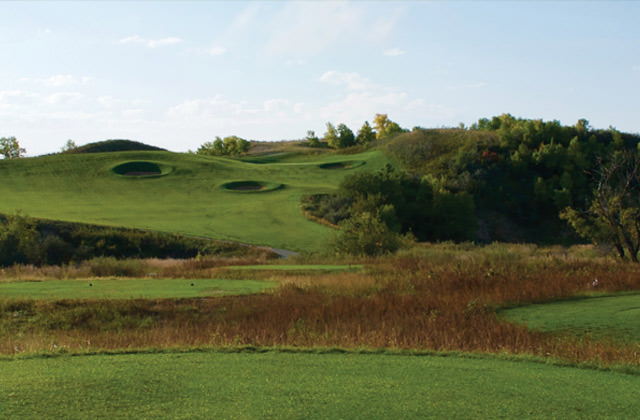
The 7,029-yard course he oversees is echt Engh—an ocular feast defined by idiosyncratic bounces, pot bunkers and quirky greens with surrounds that can both feed and defend a putting surface. To account for wind, the fairways spread as wide as 130 yards, with mounded shoulders that represent what little earthmoving was done.
“The native ground, the quirks of nature, are cooler than anything I could ever create,” Engh says, looking out towards the undulant expanse of prairie grasses and mature trees into which he sculpted 18 tremendous holes. “There was so much going on here, it would have been overkill to add much more.”
That restraint evinces itself on the first hole, mid-length left-dogleg par 4 from an elevated tee to a kidney-shaped green bent around a deep pot bunker front and center—the only one on the entire hole. A solitary bunker appears on the par 5 that follows.
And none turn up on the number-one handicap hole, the par-5 third defined by the Puppy Dog Coulee, which runs along the right side of the fairway before curling twice across it, suggestive of the burn snaking through Carnoustie’s 18th.
“Because of nature, you get one cool shot after another,” Engh says. The “cool shot” here isn’t carrying the hazard and getting on in two; it’s hitting to a hidden second-shot landing area short and to the right of the second crossing. This area, which from the first landing area doesn’t actually appear to be in play, affords a better angle into the green.
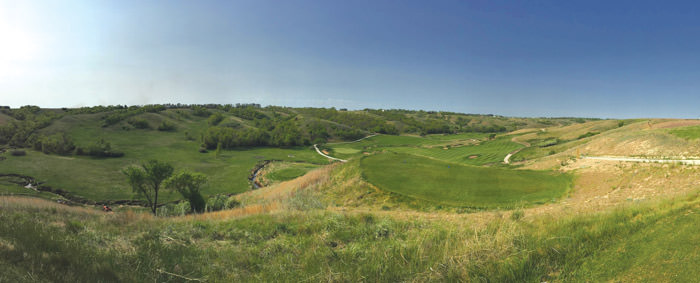
“Ron Whitten said he didn’t think he’d ever seen anything like that before,” Engh says, referring to Golf Digest’s venerable archi-tecture editor. “He meant it in a good way.”
Engh calls the third and sixth his favorite holes. The latter—a reachable but uphill par 4 he calls the “catcher’s mitt”—sports three pot bunkers on a fairway that banks hard left, leaving a blind pitch over the hazards. “I love this shot,” he says. “It’s fun.”
Fun defines Engh’s approach to golf. An acolyte of Irish courses, he prefers the eccentricities of Carne and Enniscrone to the predictability of Royal Portrush, which will host the 2019 Open Championship. The latter, he says, “sits on perfect land for golf. I was bored with it after six holes.”
That won’t happen to players at Minot Country Club because it sits on extreme terrain that’s imperfect for traditional golf, which means it’s perfect for Jim Engh. Wild topographic slopes may lead to blind shots, uneven lies and tough stances, but they also produce booming drives from elevated tees, speed chutes, hot spots and devilishly circuitous putting lines. Visually intimidating holes—such as the long par-3 7th, cross-sloped par-5 14th (with a tree in the middle of the fairway) and mighty-carry par-4 15—often play easier than they appear.
There’s nothing easy, however, about two longest holes on the course—the back-to-back par 5s that close the round.
The penultimate challenge measures 625 yards from the tips and requires a blast off the tee just to reach the fairway. Skirt the trio of wee pot bunkers and the coulee again squiggles through the fairway, splitting it 150 yards in front of the green and forcing the kind of choice that could decide a match.
Another decision waits on the final tee: blind shot to cut the dogleg left, or carry a huge expanse of native to reach the fairway straight ahead? The former can naturally help get you on in two, but if the pin is back, don’t come up short on the approach. The tongue-shaped front, reminiscent of the severely tiered No. 8 green at Sanctuary, spits back any putt not rolled with authority.
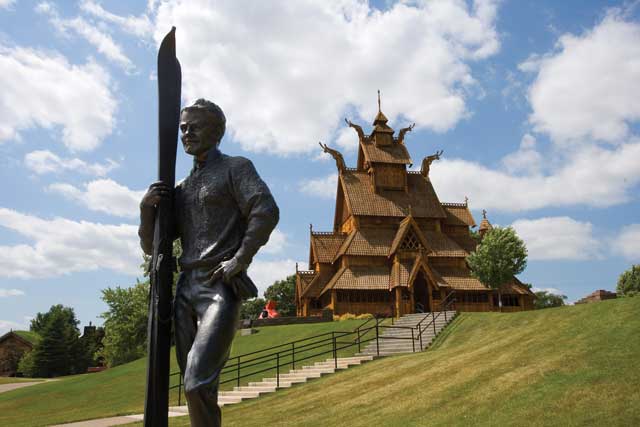
Engh certainly justified the club’s decision to relocate. As of May, it had 320 members, and discussion about “best in state” and “best new course” filled the air.
“As much as I wanted to stay on the old ground, it wasn’t going to be a country club,” Hildahl explains. “You need a place for family. Vardon is now mostly older men. Our average members are in their late 30s.”
Minot Country Club’s amenities—including the brawny new course, pool and the superb Elevation restaurant—explain part of the demographic disparity. Another reason is the post-flood change in population. Many older folks left after 2011, replaced by younger people drawn by jobs in the nearby Bakken oil and gas fields.
An even more compelling explanation is the absence of an initiation fee for those 34 years and under. The $299 in monthly dues for Junior Members is only $30 higher than what a Conventional Member pays. And if you’ve already turned 35, you can pay the $4,000 initiation over three years.
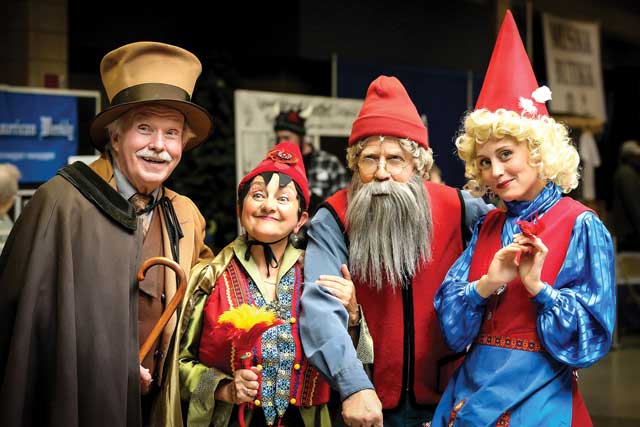
“Our members pay more for a golf vacation than they do in annual dues,” jokes Hildahl. And if you’re thinking of a golf vacation in North Dakota, anyone living 50 miles outside Minot is welcome to play the club for $112. A delightful four-day loop would include Minot, Hawktree, Bully Pulpit in Medora and The Links of North Dakota on Lake Sakakawea near Williston.
Staying in Minot has its upside, too. Like much of North Dakota, Minot is home to Nordic descendants. The city’s Scandinavian Heritage Park features structures symbolizing Sweden, Norway, Denmark, Finland, and Iceland. This September 28-October 1 brings the “pure Scandimonium” of the annual Norsk Høstfest, known for its authentic cuisine, culture displays, handcrafted merchandise and rollicking fun.
The name Minot, however, isn’t Swedish or Norwegian in origin; it’s French—like Souris—and anglicized as well. Good thing, too. “Correctly” pronounced me-no, the city’s unofficial motto could never have become the catchy “Why Not Minot?”
And then you would miss the chance to respond, “Why not, indeed.”
More info: minotcountryclub.com; 701-852-3591
This article appears in the July 2016 issue of Colorado AvidGolfer.
RELATED ARTICLES:
The Clubhouse that Saved a Golf Course
Colorado AvidGolfer is the state’s leading resource for golf and the lifestyle that surrounds it, publishing eight issues annually and proudly delivering daily content via coloradoavidgolfer.com. Follow us on Twitter, Facebook and Instagram.
Three Colorado kids took on the world at the 2024 Drive, Chip and Putt Championship at Augusta National
Scotland’s Old Course, North Berwick, Carnoustie and other greats are accessible with planning, luck and a spirit of adventure
The Colorado private-club solar system is about to see a giant new planet come into orbit
Boy Scout turns to golf to help honor the Greatest Generation